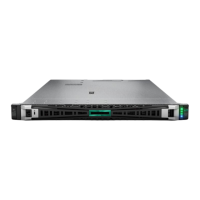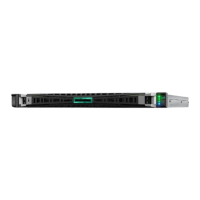Navigation History region and keyboard support
Navigation History shows system utility forms which user navigated previously. A Navigation History node
is added to the Navigation History each time you visit a new form. You can Click a Navigation History
node to return to the utility form that you previously visited.
If there are too many Navigation History nodes to fit on the Navigation History bar, the Home node is
collapsed. To view a pop-up list of the navigation history node that you visited, you can select the Home
node. To return to a previously accessed form, you can Click a Navigation History node from the list.
To move through the Navigation History region, you use the:
• Tab key to change focus in the Navigation History region.
• Enter key to get in to the Navigation History node selection mode and to select a node.
• Arrow keys to move to the node you want to select.
• Esc key to exit the Navigation History node selection mode.
System Utilities key functions
• Up or down arrow—Selects a menu option. When selected, the color of a menu option changes from
white to yellow in text browser mode, or to green in GUI mode.
• Enter—Selects an entry. A selected option changes color from white to yellow in text browser mode,
or to green in GUI mode. When a submenu is available, the submenu appears.
• Esc—Returns to the previous screen.
• F1—Displays online help about a selection in text mode.
NOTE: To display online help in GUI mode, click the ? icon on the upper right corner of the System
Utilities main screen.
• F7—Loads default UEFI BIOS configuration settings.
NOTE: Pressing F7 only resets the BIOS configuration. It does not reset other entities, such as option
cards or iLO.
• F10—Prompts you to save changed settings.
• F12—Prompts you to save changed settings, and then exits the System Utilities.
• Reboot Required (radio button)—Is selected and turns red when changes require that you reboot the
server.
• Changes Pending (radio button)—Is selected and turns red when changes are pending that must be
saved to take effect.
When a reboot is required
For certain configuration changes to take effect, a reboot might be required. In such cases, one of the
following occurs depending on your Setup Browser Selection that prompts you to do so.
• In GUI mode, the Reboot Required (radio button) is selected and turns red when changes require
that you reboot the server.
• In text mode, a prompt appears on the applicable System Utilities screen.
12 When a reboot is required

